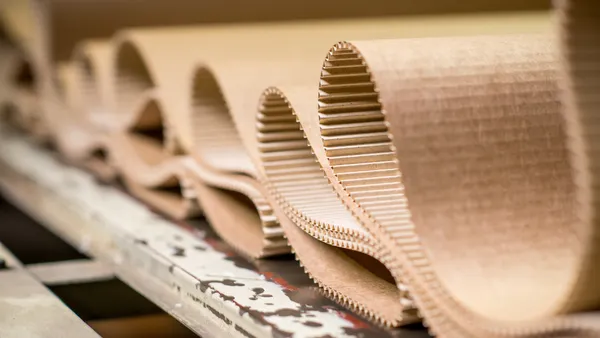- Inaugural report: Smurfit Westrock released its first quarterly earnings report for the combined company since forming in July through Smurfit Kappa’s acquisition of WestRock, with CEO Tony Smurfit touting “excellent” results on Wednesday’s call. The $150 million net loss primarily is due to expenses from the business combination. Smurfit again detailed the combined company’s move toward decentralized operations, which empowers employees at the regional, and eventually facility, level.
- The first 100 days: In the less than four months the company has existed, executives have identified “opportunities for growth and cost reduction” as well as a “much sharper customer focus” that centers on “value over volume,” Smurfit said. He pointed to “footprint initiatives” to deliver higher operating efficiency and customer retention.
- Staff reduction: “Recently, we’ve eliminated some 800 positions,” Smurfit said, as he described “making the hard decisions on the reduction in headcount” amid various other measures such as reducing overhead costs. Most of the workforce reduction “we kept in ‘24; there will be very little bleed over into ‘25,” said CFO Ken Bowles. A spokesperson confirmed these cuts occurred in multiple countries and reflected a range of positions, including executives.
- Reexamining footprint: Leaders also have visited about 85% of WestRock’s legacy paper production facilities and are determining future optimization efforts — whether that’s through investments or closures. “There are some mills that won’t be around in 5, 10, 20 years. But there are many — I think about 65% of the corrugated mills” that are in the upper quartiles for quality, Smurfit said.
- SBS uncertainty: Executives still are deciding whether WestRock’s legacy solid bleached sulfate paperboard business is a good fit for the new company. Referencing a supply and demand imbalance for that grade, Smurfit said: “There's an issue with SBS in the marketplace, and we need to figure it strategically out how to deal with that.” Bowles said the company needs to determine “how we deal with the import of the replacement product of SBS into the marketplace, which is [folding boxboard],” a virgin fiber grade more commonly produced in Europe and Asia. The company’s two main SBS mills are efficient, Smurfit said, so “for the moment, it’s staying with us.”
- Business unit performance: The company disclosed in a September securities filing that it would report overall earnings as well as those from three operating segments: Europe, the Middle East, Africa and Asia-Pacific; North America; and Latin America. The North American segment experienced a strong third quarter. Corrugated box pricing was up year over year, while volumes were down 1.1% on a same-day basis. Consumer packaging performed well, with food and beverage demand growing 4% year over year. But Germany’s weaker economy dragged down the European unit’s results, and the segment didn’t get the anticipated boost from the Summer Olympics.
- Outlook: Smurfit Westrock expects earnings before interest, taxes, depreciation and amortization for full-year 2024 of approximately $4.7 billion. Capital expenditures in 2025 are expected to total $2.2 billion to $2.4 billion, with more going toward legacy WestRock facilities than to legacy Smurfit Kappa assets.

Smurfit Westrock cuts 800 positions, eyes footprint optimization and investments
CEO Tony Smurfit touted “excellent” results for the combined company’s first earnings report but noted a desire for further asset optimization and cost reduction.

Recommended Reading
- Smurfit Westrock executives detail which legacy business segments are under evaluation By Katie Pyzyk • July 31, 2024
- Packaging manufacturers share insights from Q3 By Packaging Dive Staff • Updated Nov. 12, 2024









